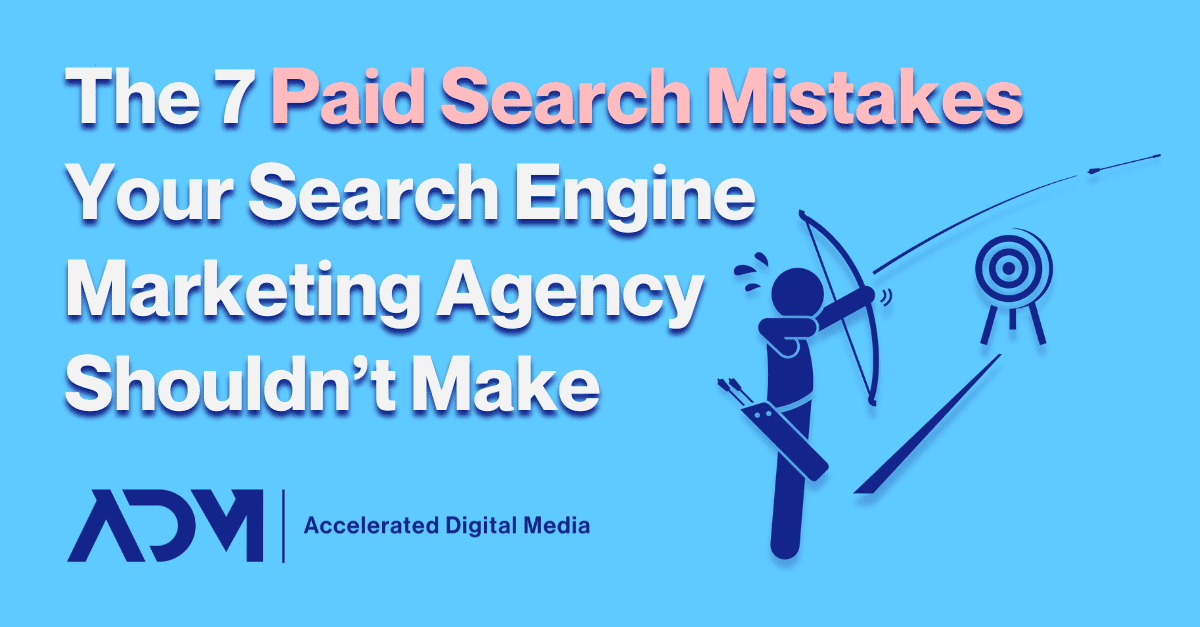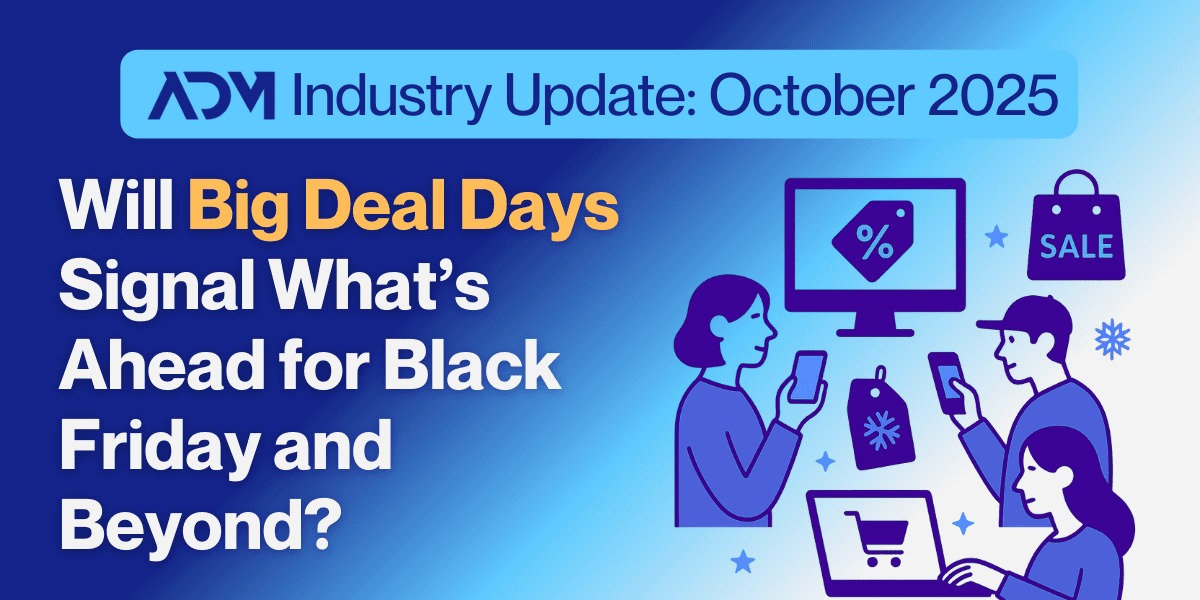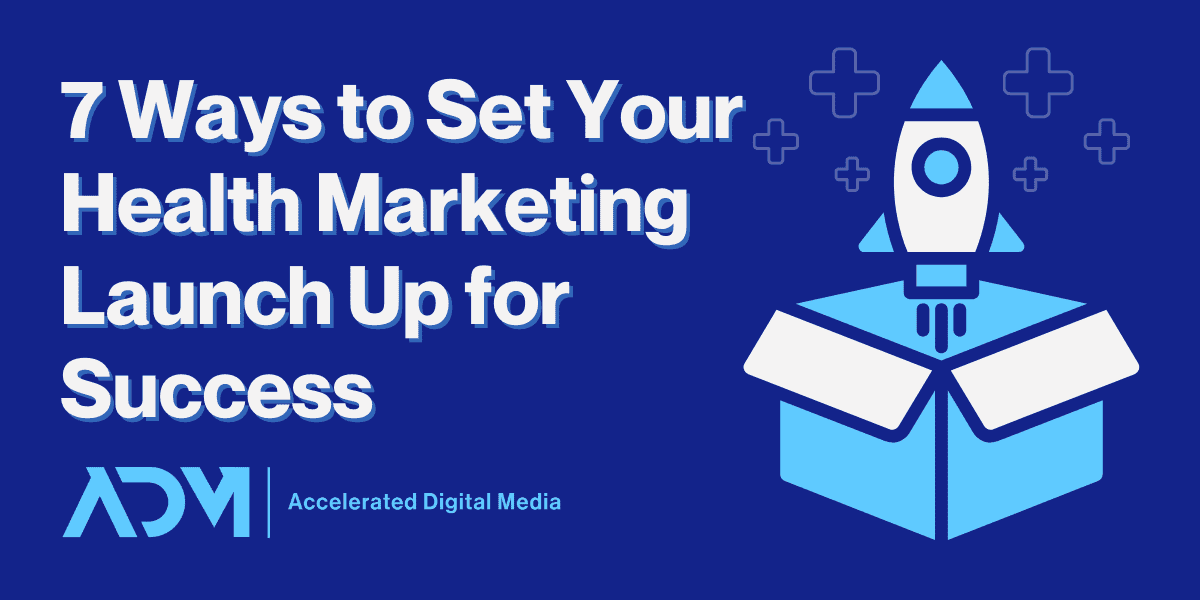Building a strong, effective paid search strategy requires thought, nuance, and attention to details. When ADM inherits new client accounts from other search engine marketing agencies or in-house marketing teams, we often find quite a few missed opportunities.
These paid search mistakes reflect a lack of knowledge or development time, and they typically produce underwhelming performance across the account. In this blog, we’ll discuss 7 of the most common paid search mistakes we encounter and why avoiding them matters so much to your Google Ads success.
Over- or Under-segmented Ad Campaigns
How you segment campaigns within your account is extremely important: Each campaign should have a defined purpose. Branded search campaigns should be separate from non-branded campaigns. Depending on your business model, non-branded keywords should be segmented by factors like product categories, target locations, or stages of the sales funnel.
But there is such a thing as over-segmentation when it comes to search campaigns. This happens when you have too many campaigns that each have too few keywords to reach potential customers and perform effectively. Campaigns need to serve often enough for Google Ads’ algorithms to determine what terms to trigger for and how to deliver effectively.
On the other hand, you don’t want to over-consolidate your campaigns. This doesn’t give you enough control over inputs and performance. You’ll want to find the right balance between building the campaign with enough keywords to give the bid strategy the opportunity to run efficiently, and breaking out the campaigns in a way that allows you to control strategy, budgeting, and bidding towards top and low performers.
No Clear Match Type Strategy
When building out keywords for campaigns, advertisers need to also consider match type. The role of broad, exact, and phrase match has changed in recent years. Exact match terms now include close variants, making their usage more similar to the older understanding of phrase match—leaving phrase match to mostly fill the role that exact match used to. Broad match keywords have become more sophisticated due to Google’s AI, allowing ads to serve for more queries based on the algorithms’ contextual learnings. There are two match type follies we see brands making frequently:
Over-reliance on broad match
Broad match can help scale your Search program to reach potential customers you wouldn’t have reached via exact and phrase match keywords. But broad match can lead to inefficient spend and irrelevant clicks if not managed appropriately. Advertisers need to be up-to-date with their negative keyword lists and intentional with their budgeting and bidding with broad match.
Over-reliance on exact match
Exact match keywords are going to drive the most relevant traffic and likely have higher conversion rates than other match types. However, exact match terms are going to be more expensive as your competitors are most likely bidding on those relevant terms too. Exact match also doesn’t provide as much reach as other match types.
The main takeaway? Brands should never limit themselves to only exact or broad match keyword targeting. Having a good balance across match types will help generate both volume and efficiency.
Inadequate Negative Keywording
Failing to regularly monitor and filter out irrelevant traffic can result in wasted spend. It’s crucial to use negative keywords to ensure that your ads are mapped correctly into the appropriate campaign or ad group. When you have an ad with customized copy and a landing page set up for specific keywords, allowing keywords from another ad group to match that query can undermine your strategy.
While Google uses backend signals to help match ads to queries, advertisers should still exert control over which ads show for particular terms. This control is necessary to maintain the effectiveness and relevance of your campaigns. Ensuring that only the intended keywords trigger your ads helps optimize campaign performance and minimize unnecessary costs.
Ad Copy Not Tailored to Keywords
Not tailoring ad copy to keyword intent and the stage of the sales funnel can lead to ineffective Google Ads. By using customized copy with unique value propositions, you can drive efficient traffic, improve your Click-Through Rates (CTR), and enhance your Quality Scores. To achieve this, align your ad copy with user intent expressed in the keywords, and ensure it matches the audience segment and their position in the funnel.
Using the same generic ad copy across multiple campaigns, regardless of the keywords they target, is a bad practice. Your SEM Agency should be continually optimizing ad copy by testing different headlines, descriptions, and value propositions in order to maintain relevance, increase visibility, and ultimately improve the performance of your Google Ads campaigns.
Incomplete Ad Extensions
Ad extensions are some of the most useful elements of a paid search ad. They can improve click-through rate by giving your ads more real estate on the search engine results page (SERP)—which also pushes your competitors further down the page.
Available extensions include:
- Sitelink Extensions: Additional links to specific website pages.
- Call Extensions: Display phone number for direct calls.
- Structured Snippet Extensions: Highlight key aspects of offerings.
- Callout Extensions: Promote unique selling points.
- Location Extensions: Show business address for local businesses.
- Price Extensions: Showcase prices for products or services.
- App Extensions: Display app download link for mobile apps.
- Review Extensions: Showcase positive reviews and ratings from reputable sources.
Ideally, your ad should include as many of these as are relevant to your business—and for most companies, all of them can be useful. But still, it’s surprising how many agencies neglect to build out the full array of available extensions—and by doing so, they are hurting their clients’ ad performance.
Lack of Testing
Not frequently running tests in your Google Ads account is a mistake because it limits your accounts’ growth potential. Your strategy should always be responsive to performance, and the best way to stay on top of things is by running frequent pre/post or A/B tests on account elements like ad copy, landing pages, bid strategies, and more.
Testing helps you refine the public-facing elements of your ads to ensure the best possible fit for your audience. It can reveal insights into their preferences and point you to efficiencies when allocating budgets, bidding, and optimizing ad performance. For brands in competitive advertising lanes, like many eCommerce verticals, a steady testing regimen is the best way to stay ahead of your competition. If you haven’t heard anything from your agency lately about the tests they’re running, it’s probably time to ask them why that is—or start looking for a new SEM agency.
Shying Away from Increased Competition
Google Ads gets competitive, and you need a search engine marketing agency that thrives off competition. But when the competition gets too fierce, some advertisers may choose to pull back, thinking that this will save their campaigns from operating inefficiently. This strategy can actually open the door for competition to take over and result in further loss of positioning.
Maintaining a competitive edge is critical to achieving long-term success. Instead of retreating in the face of intensifying keyword costs, businesses should consider raising their bid strategy price targets. By doing so, they can re-establish their positioning, resulting in improved conversion rates. This approach can lead to better outcomes in the long run compared to scaling back even further in response to increased competition.
If you’re looking for a search engine marketing agency that builds custom, detailed strategies for each of its clients—and never shies away from a competitive challenge—consider reaching out to ADM for a consultation or SEM audit today.




